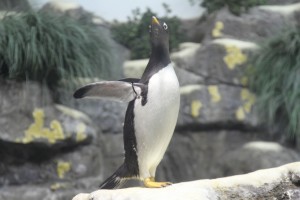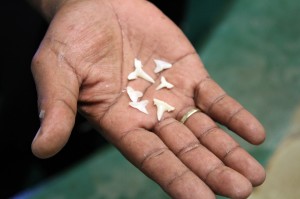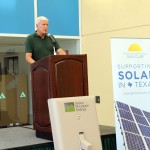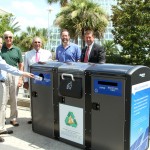It’s a slow week around the world. A Slow Loris week that is!

Pygmy Slow Loris at the Rainforest Pyramid
Now in its fourth year, Slow Loris Outreach Week (S.L.O.W.) is aimed to bring awareness to the rapid decline of one of the world’s most endangered group of primates. SLOW lasts until Sunday, Sept. 14.
The week was started by “The Little Fireface Project,” the world’s longest running Loris conservation project. The Project started in 1993 under the supervision of the Nocturnal Primate Research Group of Oxford Brookes University.
So what exactly are Slow Lorises? Here are some facts about these unique primates.
• There are five types of Lorises – Sunda, Bengal, Pygmy, Javan, and Bornean.
• The name Little Fireface comes from the Sundanese name for Slow Loris – muka geni. In other languages, Loris means thin one, wind monkey (both in Sumatra and Thailand), forest baby, and the shy one.
• Slow Lorises are actually venomous, making them the only poisonous primate in the world. They produce their venom by combining saliva with oil from a gland on the upper arm. This poison can cause anaphylactic shock, and even death, to humans.
• Each Slow Loris species is recognized as either vulnerable or endangered by the International Union for the Conservation of Nature. Threats to the Slow Loris include illegal pet trade, hunting for traditional medicinal purposes, and habitat loss/destruction.
You can see two Pygmy Slow Loris girls, Blackwell and Cai, at the Moody Gardens Rainforest Pyramid. Moody Gardens is a part of the AZA Species Survival Program, which is responsible for developing a comprehensive population Studbook and a Breeding and Transfer Plan which identifies population management goals and recommendations to ensure the sustainability of a healthy, genetically diverse, and demographically varied AZA population. Blackwell and Cai were both born at Moody Gardens.
To learn more about SLOW and what you can do to help, visit www.nocturama.org.

 Look for these penguin courtship behaviors:
Look for these penguin courtship behaviors:  Harbor Seal Courtship:
Harbor Seal Courtship: Sea Lion Courtship:
Sea Lion Courtship: Sharks’ teeth are adapted for what they eat. Sharks like the great white and tiger shark have triangular teeth with jagged edges. This keeps hold of larger fish and animals, tear chunks of meat or slice through a turtle’s shell. A sand tiger’s teeth, on the other hand, are long and narrow which make them look frightening, but in fact these types of sharks are not very aggressive. The shape of their teeth is ideal for grabbing a hold of prey. However, the whale shark has very small teeth and it’s not used for biting because they simply filter their food.
Sharks’ teeth are adapted for what they eat. Sharks like the great white and tiger shark have triangular teeth with jagged edges. This keeps hold of larger fish and animals, tear chunks of meat or slice through a turtle’s shell. A sand tiger’s teeth, on the other hand, are long and narrow which make them look frightening, but in fact these types of sharks are not very aggressive. The shape of their teeth is ideal for grabbing a hold of prey. However, the whale shark has very small teeth and it’s not used for biting because they simply filter their food. Coloration and patterns play an important role in identifying a shark. Their special marks allow them to camouflage perfectly into their environment. Mako sharks, for example, inhabit tropical and offshore water and are normally a bluish color. On the other hand, the nurse shark has a tan pigmentation ideal for hiding on the ocean’s floor. Tiger sharks can be identified by their stripes and leopard sharks for their spots.
Coloration and patterns play an important role in identifying a shark. Their special marks allow them to camouflage perfectly into their environment. Mako sharks, for example, inhabit tropical and offshore water and are normally a bluish color. On the other hand, the nurse shark has a tan pigmentation ideal for hiding on the ocean’s floor. Tiger sharks can be identified by their stripes and leopard sharks for their spots.
 In early 1999 I found myself in Taiji, Japan working on a marine mammal acquisition for the Beijing Aquarium. The conservation ethics surrounding “The Cove” are another story deserving its own chapter at another time. While we were working at a Dolphin encounter resort on the outskirts of Taiji, we were staying in a fishing community just to the north called Katsuura. Every day we drove past the waterfront in Katsuura through the bustle of activity around the fishing markets. On one of my few days off, I visited the market to see what was being caught and auctioned. The sheer number of top level predator fishes that were laid out in organized stacks in the football-field-sized warehouse space was amazing. Tuna, mackerel, billfish and ocean sunfish made up the bulk of the daily catch. There were also several piles of shark fins stacked 4’ high and spreading over perhaps a 12’ diameter area. I couldn’t locate any shark bodies in the entire market area, just three or four large heaps of fins.
In early 1999 I found myself in Taiji, Japan working on a marine mammal acquisition for the Beijing Aquarium. The conservation ethics surrounding “The Cove” are another story deserving its own chapter at another time. While we were working at a Dolphin encounter resort on the outskirts of Taiji, we were staying in a fishing community just to the north called Katsuura. Every day we drove past the waterfront in Katsuura through the bustle of activity around the fishing markets. On one of my few days off, I visited the market to see what was being caught and auctioned. The sheer number of top level predator fishes that were laid out in organized stacks in the football-field-sized warehouse space was amazing. Tuna, mackerel, billfish and ocean sunfish made up the bulk of the daily catch. There were also several piles of shark fins stacked 4’ high and spreading over perhaps a 12’ diameter area. I couldn’t locate any shark bodies in the entire market area, just three or four large heaps of fins.
















